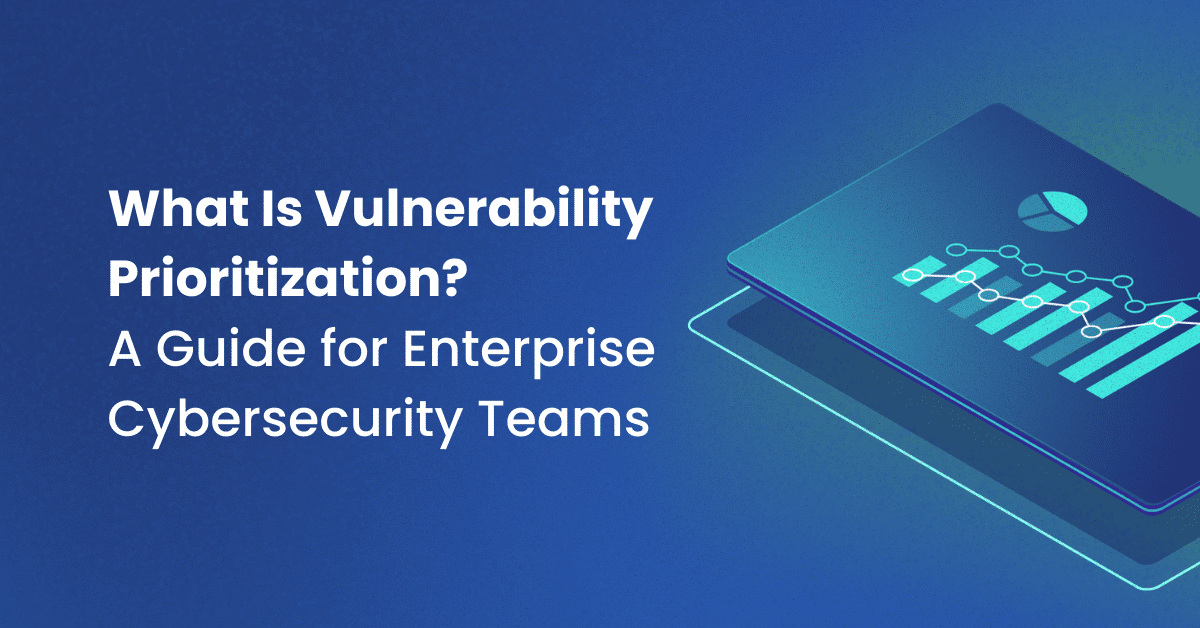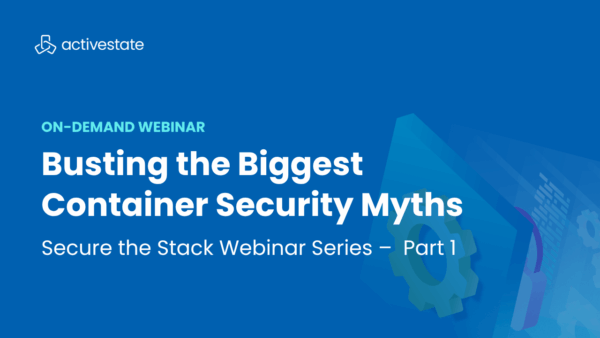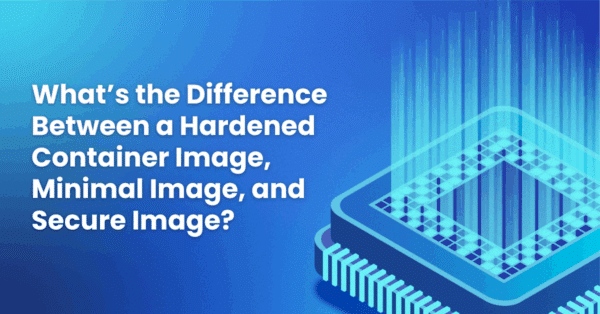Vulnerability prioritization is far from simple. Yet, many DevSecOps teams are manually evaluating which vulnerabilities to remediate based on severity alone. Only considering the severity of vulnerabilities won’t paint the full picture, leaving teams in the dark. It’s also inefficient.
In our recent 2025 State of Vulnerability Management and Remediation Report, we found that larger enterprises and their teams who aren’t using a dedicated remediation tool spend over a quarter (26%) of vulnerability management project hours tediously researching and prioritizing vulnerabilities. The hard truth? After all that effort, they’re still not likely to come away with a fully maximized prioritization plan.
When considering the scale of this challenge for enterprises managing an increasing amount of complex code, it’s immediately apparent how an inefficient vulnerability prioritization approach can present a huge business risk. With thousands of alerts going off everyday, teams need a reliable, automated, and systematic approach for prioritizing vulnerabilities that goes beyond severity and considers other important factors that accurately portray the full scope of the threat.
In this article, we’ll introduce and explore a more systematic approach to vulnerability prioritization – one that emphasizes the use of AI, automation, and technology to refine the prioritization process, increase productivity, and improve accuracy.
What is vulnerability prioritization?
Vulnerability prioritization is the process of evaluating open source vulnerabilities to determine which pose the most severe threat or risk to an organization and should be remediated first. Vulnerability prioritization is an important part of the vulnerability management process, ensuring teams focus their resources on the most impactful and risky vulnerabilities first to maximize their protection.
Part of what makes risk prioritization so challenging and time consuming is that it’s not a one-size-fits-all approach. Depending on how code is being used within your applications, you may deem vulnerabilities with critical or lower severity based on your specific use case. Effective prioritization considers these factors and helps keep security actions aligned with real-time business risk.
Vulnerability prioritization comes second in the vulnerability management process, also known as the application posture security management (ASPM) pillars, of Detect, Prioritize, and Remediate. Before prioritizing, teams must find and identify vulnerabilities within the ‘Detect’ step.
An intelligent remediation tool, like ActiveState, can help empower DevSecOps, engineering, and security teams to discover vulnerabilities by providing transparent observability across their open source landscape, and to identify components and vulnerabilities to better understand the vulnerability blast radius, proprietary dependency intelligence, open source discovery, and continuous vulnerability monitoring.
The status quo isn’t cutting it: Why enterprises need an updated approach for how to prioritize vulnerabilities
Building and maintaining secure applications is more complex than ever. Before, teams could get away with a reactive approach to vulnerability management. Now, nothing short of a proactive approach will offer meaningful protection against real-world threats.
Here are a few key reasons why enterprises need to update their approach to vulnerability management prioritization:
- Dependencies are a maze your devs are getting lost in. Intertwined dependencies leave enterprises at risk for dominos-style repercussions after a cyber attack. Plus, code is getting increasingly complex. Sprawling applications produce an overwhelming number of security alerts everyday, creating noise that’s difficult to manage.
- Open source is commonplace. Using open source to build core infrastructure is now the norm. While this greatly improves efficiency (why reinvent the wheel?), it creates an illusion of security. Over a quarter of organizations rely on maintainers to make sure third party and open-source components are free of vulnerabilities. That’s a lot of trust to place outside of your organization.
- Resources are limited for the foreseeable future. Teams don’t have the luxury of wasting hundreds of developer hours on inaccurate risk prioritization. Enterprises must implement a streamlined approach for identifying and prioritizing risk that maximizes impact.
- Attackers are getting smarter. Attackers know where to look, and they can act faster to exploit vulnerabilities than your team can to find and fix them, like in the case of zero-day exploits like the recent Perl (something ActiveState can help enterprises with).
Investing in a better approach to vulnerability prioritization presents a multitude of benefits to enterprises, helping to reduce downtime from exploits, avoid breaches of private information that could violate acts like HIPAA and PCI DSS, and protect your organization’s reputation in the market.
How to prioritize vulnerability remediation: Key steps
Not sure where to begin with creating a system-based approach for remediating vulnerabilities? Here are a few key steps to consider.
Inventory and contextualize vulnerabilities within your applications
Before you can even begin prioritizing vulnerabilities, you need a complete view of what you’re dealing with. As we mentioned earlier, Detect is the first step in the vulnerability remediation process. Gaining observability of vulnerabilities and contextualizing their impact within your codebase is crucial.
Consider adopting an intelligent remediation platform, like ActiveState, that automatically keeps an up-to-date record of what’s currently vulnerable within your applications and shows you why it matters with:
- Proprietary dependency intelligence: Using the world’s largest open source database (40M+ artifacts and growing), ActiveState can map your entire dependency graph, including hidden transitive dependencies that SCA tools often miss.
- Organizational impact controls: Finally uncover the open source components lurking in Kubernetes clusters, Docker images, and developer environments. Eliminate rogue dependencies by enforcing policies to ensure only sanctioned, secure versions are used.
- Continuous vulnerability monitoring: Keep guards at the fortress walls 24/7, detection begins at the ingestion of SBOMs to track runtime usage, crowdsource insights from global deployments, and alert you to any deviations from ideal configurations.
Factor in real business impact and asset criticality
Not every vulnerability is created equal. Not only that – not every vulnerability presents the same threat to every organization.
For example, your organization and another organization are using the same non-proprietary code within your applications. The hypothetical code has been flagged as having a vulnerability. Your organization has sensitive data tied to this vulnerability, but the other organization doesn’t. Therefore, you rank this vulnerability as being far more risky than the other company, which will impact how you prioritize remediating it. This demonstrates why it’s so important to fully understand the business impact for your specific use case.
Further, factoring in asset criticality is also important. Vulnerabilities in mission-critical applications that could have a cascading impact should rank much higher when prioritizing. This will change from organization to organization, which is why adopting an intelligent remediation platform that can contextualize vulnerabilities within your organization’s reality is so important.
Add threat intelligence and attack-based vulnerability prioritization
Threat intelligence is a key part of prioritization, helping you evaluate threats based on a deeper understanding of what’s at stake. For example, threat intelligence can help you determine:
- Motivations for attacks and who might be behind them.
- Likely attack methods.
- Previous targets.
- Red flags that an attack is being carried out (indicators of compromise IOCs).
All of these tidbits of information can help you evaluate how likely bad actors will target your specific applications. To illustrate, if a known motivator for attacking a vulnerability found within your application is to gain access to financial information, but your application doesn’t store any financial data, then the vulnerability may be lower in priority for you to address.
Going one step further, attack-based vulnerability prioritization is a great help for understanding how an attack could look in a real-world scenario. You can simulate an attack within your actual data to help your team grasp the true impact of exploited vulnerabilities and visualize a clear path to prioritization based on the findings.
Apply a vulnerability prioritization matrix to improve decision-making consistency
The vulnerability prioritization matrix is a tried-and-true, static method for prioritizing vulnerabilities. When evaluated manually, it’s not the most sophisticated approach to prioritizing vulnerabilities. Regardless, it provides a good starting point that goes beyond severity and considers other factors. It also helps teams create a quantitative, consistent approach for assessing vulnerabilities.
The matrix assigns a weight to defined factors, helping you generate a prioritization score. Here are a few examples of factors you could include in your matrix:
- Severity, based on the Common Vulnerability Scoring System (CVSS). CVSS is the vanilla ice cream of vulnerability prioritization. It provides a great base. It’s a widely-used system for ranking the severity of vulnerabilities based on a number of factors. While it does give you an idea of severity, it cannot give you an accurate indicator of holistic risk. For that, we need to add some more ingredients…
- Exploitability helps you rank how likely and easy it would be for a bad actor to attack a vulnerability.
- Exposure indicates whether a vulnerability is public-facing or internal. Public vulnerabilities generate higher risk for being exploited.
- Business impact evaluates what the loss could be to the business if a vulnerability is exploited. This could be in terms of financial cost, reputation loss, time taken away from other initiatives, legal impact, etc.
Continuously remediate by aligning prioritization with DevSecOps pipelines
The crucial and often missing piece for enterprises is the remediation phase. By incorporating vulnerability management throughout your entire DevSecOps pipeline, you can share the responsibility and accountability for remediation across your team. Many teams are structured in a way that security teams swoop in after code is shipped to identify vulnerabilities and request patches. This approach is both reactive and risky – allowing unsecure code to make it to production.
An integrated approach that empowers your developers to detect, prioritize, and remediate threats as part of their development cycles will save time and keep your applications more secure.
Real challenges blocking teams from accurately prioritizing vulnerabilities
There’s a reason teams are drawn to a basic, straight-forward approach to how to prioritize security vulnerabilities. Many teams are faced with real challenges that make comprehensive, multi-pronged vulnerability prioritization an uphill battle.
- Code bases are growing larger. Basic tools designed to help alert to cybersecurity risks aren’t smart enough to provide added guidance. Instead, teams are overburdened with security alerts with no direction on what to tackle first. The alert fatigue is real.
- Shifts in the economy mean teams are constantly being asked to do more with less. Even though everyone knows it’s risky, proactive prioritization is becoming a nice-to-have rather than a need-to-have.
- Finding cross-functional alignment between development, security, and operational teams can be a real challenge. Competing mandates and interests without cohesive leadership can make collaboration nearly impossible.
- The dynamic, ever-changing threat landscape requires constant reprioritization. The digital world changes minute by minute, and no human on earth is capable of keeping pace.
So, what do we do about these challenges? Technology leaders must turn to intelligent remediation platforms to support these efforts.
Intelligent remediation platforms: Ushering in a new era of vulnerability prioritization and management
Our intelligent remediation platform, Activestate, uses automated context gathering, automation, and AI to help real teams like yours overcome these challenges. Here’s how:
- Reclaim up to 30% of your developer’s time by saying goodbye to manual triage and alert spam. Help your team focus on what matters with intelligent, context-based alerts for what vulnerabilities need to be tackled most urgently.
- Let humans do what they do best and leave the rest to be guided by automation and AI, giving your team more precious time back in their day to focus on high-value, innovative work.
- One central intelligent remediation platform helps bring visibility and improve collaboration across disparate teams, helping DevSecOps work in parallel towards the same goals. Cut incident response time from months to hours.
- Reduce attack surface by 70+%. Attack-based prioritization can help you get ahead of zero-day threats by stress-testing your code in a simulated environment, empowering your team to identify your most vulnerable threats before attackers do.
- Dynamic scoring takes the vulnerability prioritization matrix to the next level, providing a comprehensive, consistent approach for prioritizing vulnerabilities.
In 2025, a sophisticated approach to vulnerability prioritization is your team’s secret-weapon to getting ahead of the real threats posed to your business everyday. Businesses operating at the enterprise level simply cannot maintain a manual, static approach. An investment in a proper intelligent remediation platform will have an outsized impact on your DevSecOp team’s efficiency and accuracy when managing vulnerabilities.
Learn more about how ActiveState can help enable improved vulnerability prioritization and faster remediation. Book a demo today.







